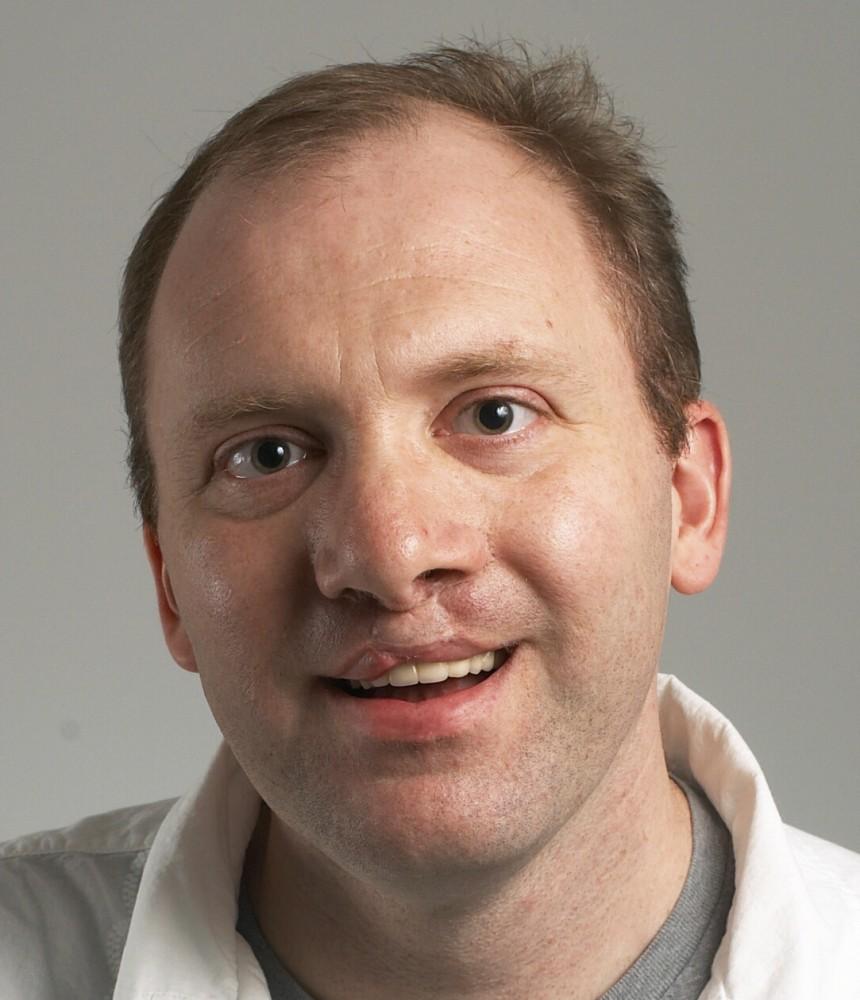Professor, student researchers explore new Parkinson’s therapies

Courtesy Photo / Merritt Taylor Professor Merritt Taylor
Sep 20, 2010
On the fifth floor of the Cook-DeVos Center for Health Sciences at Grand Valley State University, one researcher and his students are paving the way for medical advances.
Merritt Taylor, an assistant professor of GVSU’s biomedical science department, leads a group of undergraduate researchers in a study that may have implications for the treatment of Parkinson’s disease. His team began with a general study of how stem cells in embryos develop to form the nervous system, but since then the team narrowed in on a specific gene.
They believe the gene is involved with the creation of dopamine neurons, which are crucial to controlling motor skills and are the genes targeted for destruction in Parkinson’s patients.
“We sort of stumbled into this, but what we think what we’re seeing is that this gene we’re looking at could be very important for those neurons,” Taylor said. “If we can prove that that’s the case, we could potentially be able to foster understanding for different types of therapeutics for Parkinson’s or be able to understand the pathogenesis for Parkinson’s disease.”
Researchers use chick embryos as their model system to manipulate the genes. They insert DNA into the embryos in an attempt to overemphasize or de-emphasize characteristics they believe are significant to nervous system development.
Thirteen students have worked in Taylor’s lab, seven of whom have graduated. The students get experience with critical lab techniques, which make them prime candidates for graduate programs and entry-level positions at laboratories. Fourth-year GVSU student Elizabeth King, who works with Taylor, said the opportunity has been invaluable.
“I think one of the things that’s lacking in the biomedical science department is just basic lab skills when you’re doing critical lab tests,” she said. “I hadn’t run a gel since BIO 120, and even then the gels were made for us. I had never used an automatic pipetter, and now I can’t live without them. I had never electroporated. It’s stuff that I never would have gotten in a classroom and it’s interactive learning.”
Taylor began working on neural stem cell biology research eight years ago when he was a post-doctorate fellow at the University of Michigan. He came to GVSU in 2006. He said the emphasis GVSU places on undergraduate research opportunities was a strong draw when he was considering universities.
“When I came from U of M, I really wanted to find a place where we could have the facilities and the support to be able to really get undergraduates involved in the research,” he said. “That came from my own experience. I was an undergrad when I started to do research, and I think without that lab experience I would have left science. The sciences classes were poorly taught, they were dry, and I was bored. I really wanted to be able to pay it forward and pass it on and be able to provide that experience for other students.”
The Center for Scholarly and Creative Excellence’s strategic plan 2008-2013 also emphasizes undergraduate research opportunities. The CSCE is responsible for research grants and resources.
“Students learn to think for themselves as they develop the skills of inquiry, reflection, critical analysis, dialogue and expression,” according to the strategic plan.
For Taylor, the collaborative nature of the work is another benefit. Along with faculty and student researchers, the CHS building houses the Western Michigan Science and Technology Initiative and Avalon Research Labs. GVSU also works with the Van Andel Institute and nearby medical facilities.
“There’s a lot of different types of collaboration that emerge, so the students get to collaborate and hopefully that’s exemplified by the faculty,” Taylor said. “To have a place to work where people get along and there’s not a lot of fighting, that’s a big deal.”





















